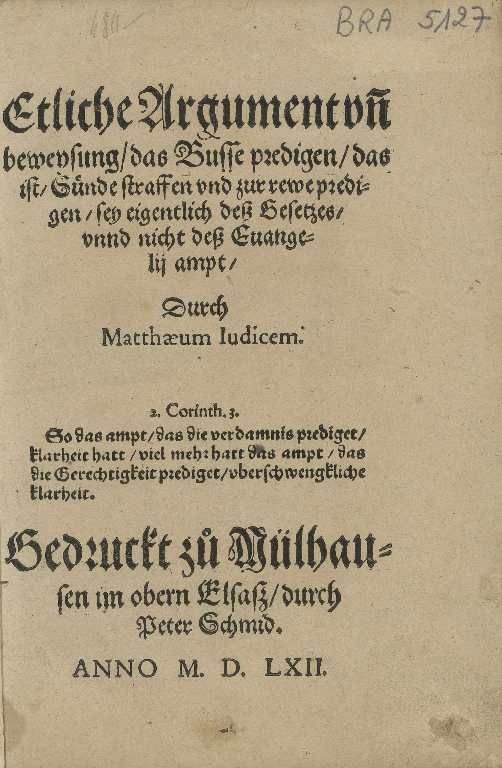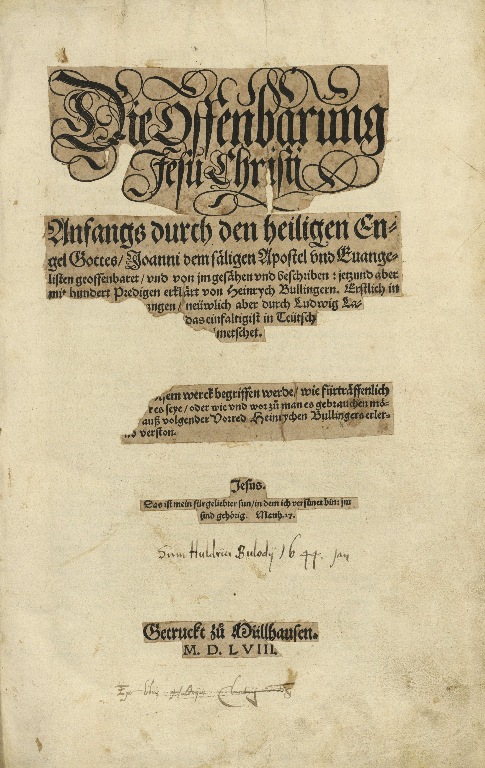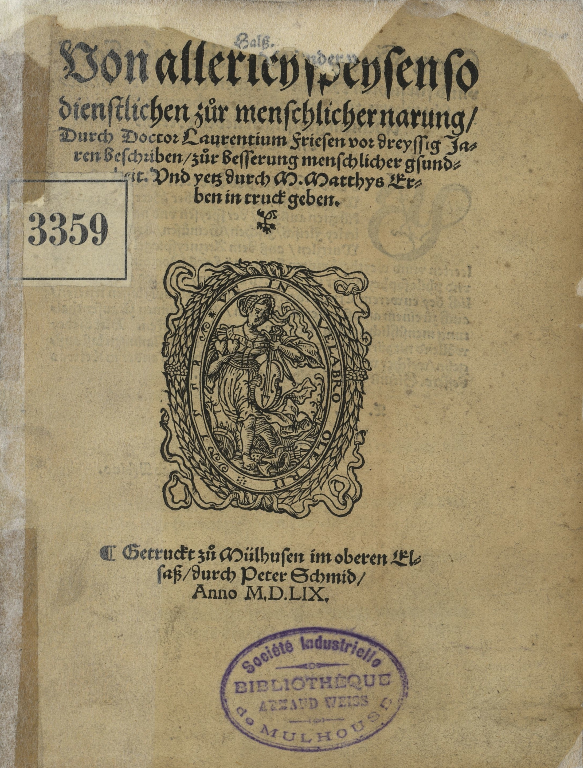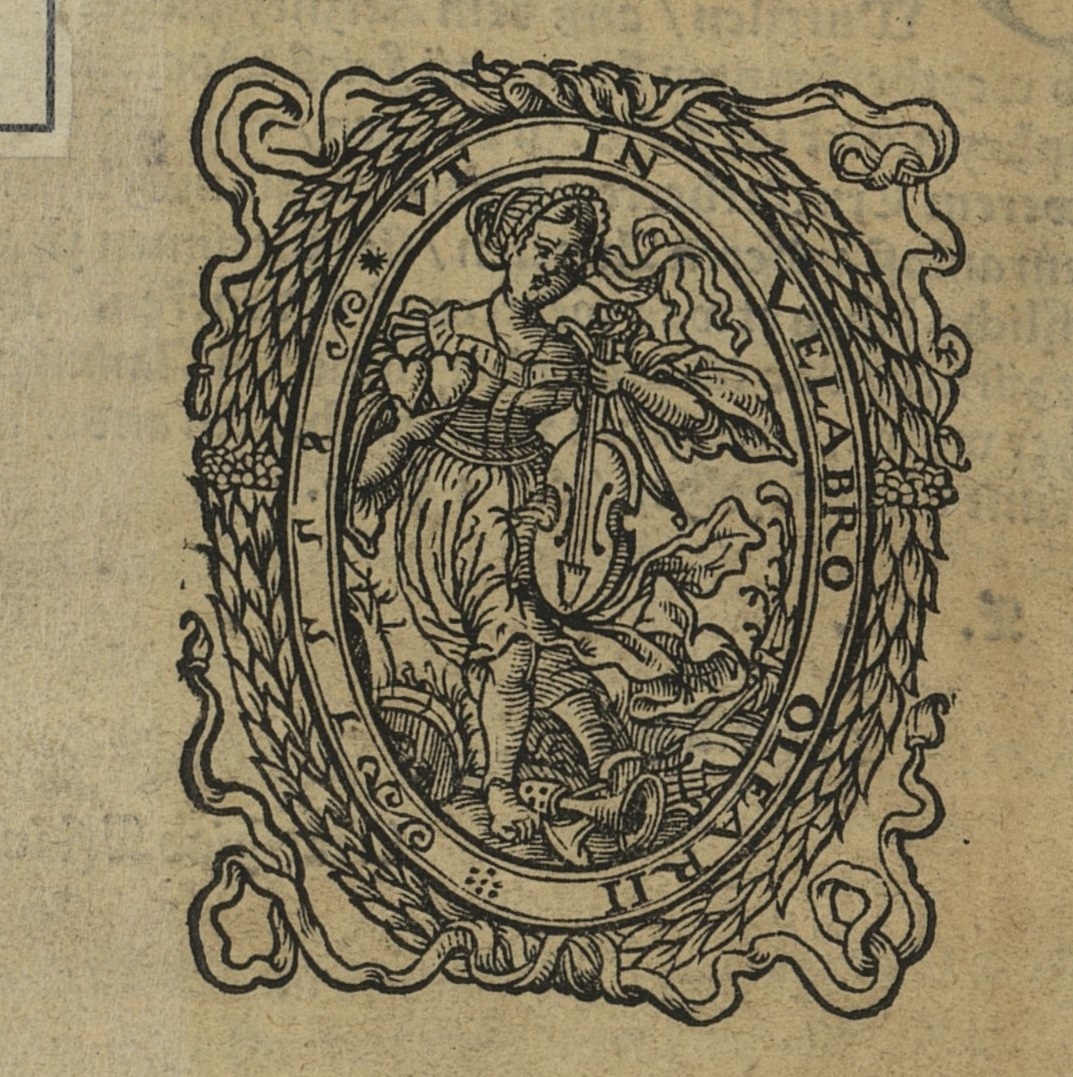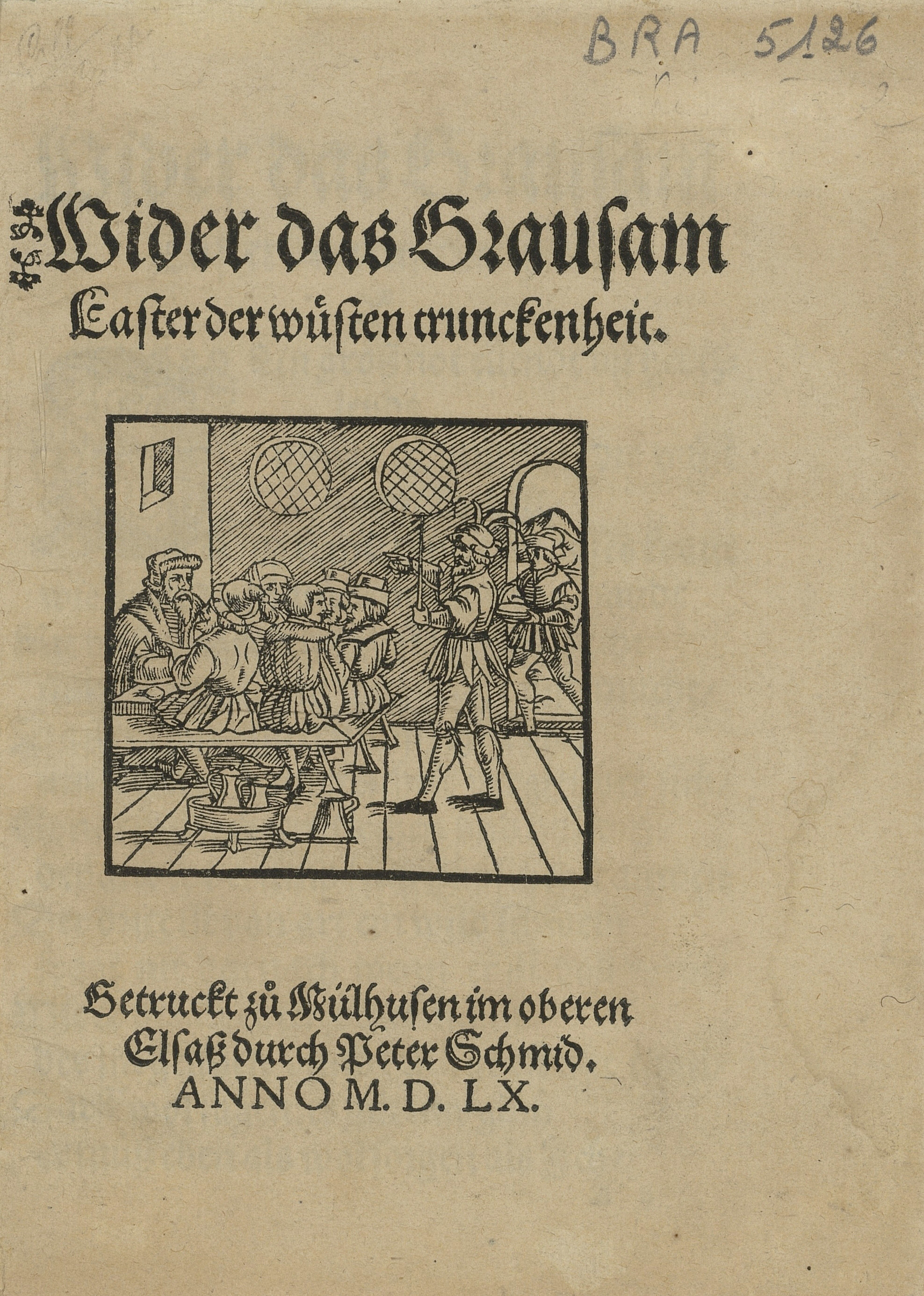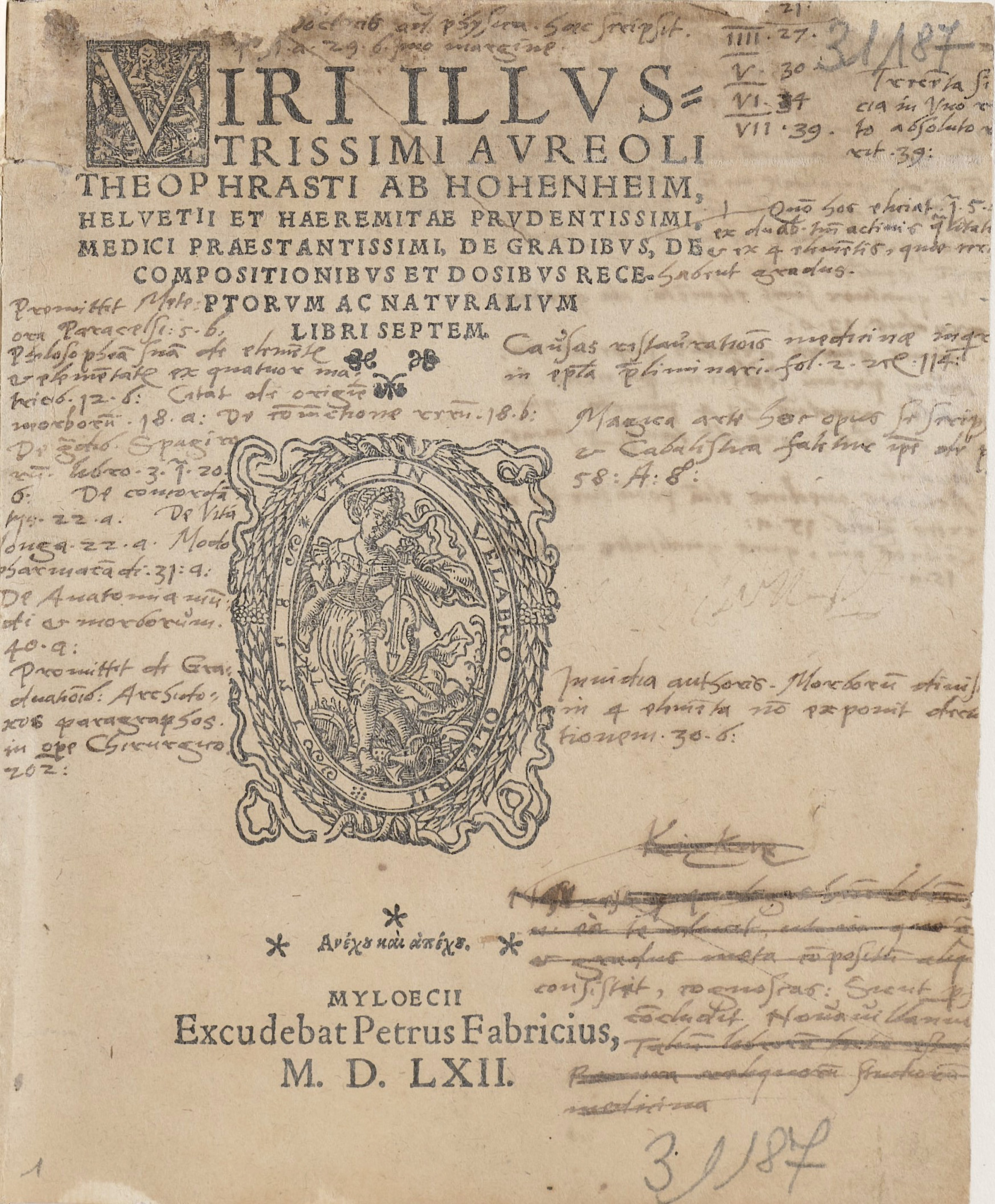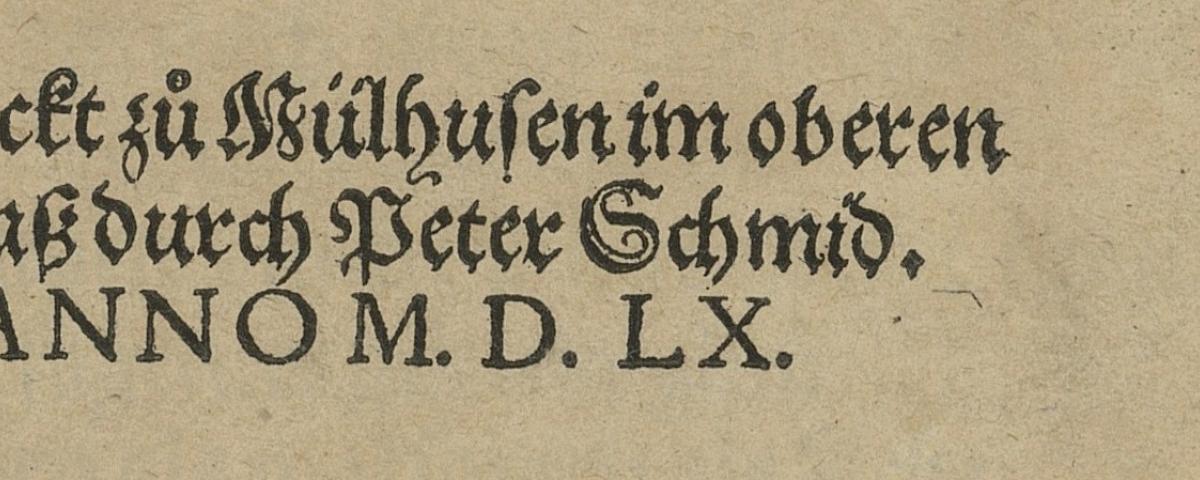
The partnership between Peter Schmid and Jean Schirenbrand (1557-1559)
In 1557, Jean Schirenbrand and Peter Schmid set up their first printing shop in the former Franciscan convent of Mulhouse, which the town rented to them for two years at a cost of 20 florins. There are no documents giving us any information about Jean Schirenbrand, his origins, his exact profession or what became of him after he parted company with his partner in April 1559. On the other hand, we know more about Peter Schmid. Originally from Wittenberg, he worked there with his father at Jean Lufft, Luther's printer. It was probably there that he learned his trade. Later, he was employed as a proofreader by Christophe Froschauer, Zwingli's printer, in Zurich. He also seems to have studied seriously, as he translated several Greek and Latin works.
Schmid faced financial difficulties as soon as he arrived in Mulhouse. In 1554, lacking the funds to set up their printing works, the two partners took out a loan from the preacher Martin Wetzler, who had taken refuge in Mulhouse at the time. They also took out a loan of 400 florins from the town of Mulhouse.
Despite this, financial difficulties began to mount for the two partners, as their printing works did not seem to be making enough money to pay the rent of 20 florins. Aware of the financial situation of their business, Jean Schirenbrand left the shop in 1559. It was at this time that the first inventory was drawn up – kept in the Mulhouse town archives – providing information on the works published between 1557 and 1559, as well as on the equipment, engravings, and drawings held at the printing works at the time. These inventories were published in extenso by archivist Jos. Coudre in the Bulletin du Musée historique de Mulhouse of 1877. The information provided by the inventories is of vital importance for the history of printing in the 16th century: they tell us the price of books and equipment.
As well as counting the books printed during the two years of the Schrienbrand-Schmid association's existence between 1557 and 1559, these inventories also list the copies still on deposit and the price of each book. This is all the more important for the history of this workshop than for all the other printing works in Strasbourg, Haguenau, Sélestat or Colmar, as we have very few sources on the price of books.
In 1877, Jos. Coudre highlighted the financial difficulties of the printing works: only a few dozen works had been printed, but they were of little importance: a prayer book, 3 books on morality and religious polemic, 4 works on medicine and hygiene, a treatise on calligraphy, a syllabary, a large number of songs, a few plays, a volume of secular oracles, a collection of stories and almanacs of various kinds.
Peter Schmid (1559-1564)
After the departure of Jean Schirenbrand and until 1564, Peter Schmid worked alone in his workshop. During this five-year period, he printed around thirty works: treatises on medicine and theology, and historical works. To these must be added the few books mentioned above that came off the Schirenbrand-Schmid presses. But these works were not enough to cover the financial costs: Schmid accumulated loans and debts throughout his activity as a printer in Mulhouse.
On 15 May 1564, he signed an acknowledgement of debt to the town of Mulhouse for 647.5 florins. It was at this point that he left Mulhouse. It is known that he continued to work in Frankfurt as a printer, in particular for the publishers Simon Huter and Sigismond Feyerabend, and that he frequently signed his Latinised name –Fabricius or Fabritius, depending on the fashion of the time. He had already used it between 1561 and 1564 while working in Mulhouse. Peter Schmid's subsequent fate is unknown. The last publication signed with his name dates from 1588. In the absence of any later discoveries, we can only assume that he died shortly afterwards.
